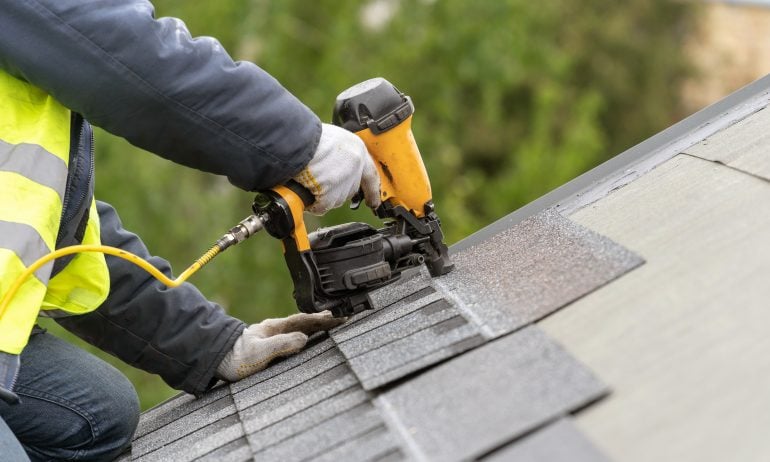Are Cockroaches Bad for Asthma?

Asthmatic people don’t recognise the dangers of cockroaches. To them, they are mere nuisances.
Apart from feeling unsettled from seeing them scuttling about in your kitchen, cockroaches seriously trigger respiratory disorders. For those with severe asthma, they are a major issue since allergens from them can instigate allergic reactions.
Thus, you must understand how cockroaches are linked to asthma in order to protect your house and health.
Why Cockroaches Are a Problem for Asthma
From their saliva, faeces, and missing body parts, cockroaches cause allergies. For those with asthmatic diagnosis particularly, these floating allergens can be easily inhaled. When that happens, these allergens aggravate symptoms and attacks by irritating the airways.
Research, especially in inner-city settings where infestations are more widespread, has found a strong connection between asthma attacks and exposure to cockroach allergens.
Studies also show that children living in houses with cockroaches are more likely to have early-life signs, making children more prone to have health issues connected to cockroaches.
Since they flourish in dark, damp surroundings, cockroaches infest houses with little ventilation or high humidity.
How Cockroaches Set Off Asthma Attacks
The immune system of patients with asthma reacts rather forcefully to allergens, mistaking them for harmful invaders.
Droppings are particularly potent allergens as they can induce reactions like wheezing, chest tightness, and shortness of breath rather quickly. Under more severe conditions, these particles can set off an asthma episode that requires quick medical attention.
You should be proactive in controlling infestations as allergens caused by them can linger in the air and gather on surfaces.
The Role of Cockroach Droppings and Shed Skin
The shed skin and droppings of roaches often instigate allergies. These tiny particles can amass behind cabinets and kitchen appliances or near trash cans where cockroaches are most active.
These specks become airborne and easy to breathe, making them troublesome for people with asthma when they’re large in numbers.
In homes with severe infestations, droppings can increase in numbers and create a constant source of allergies. What’s worse, allergens can stay in the surroundings long after an infestation has been eliminated unless your home is completely clean.
Reducing the cockroach population and cleansing contaminated areas will significantly reduce the level of cockroach allergens in your residence and, hence, the asthma risks.
Control Cockroaches
Good pest prevention eliminates the danger of future attacks and promotes indoor air quality. These are important steps to lower cockroach allergens and help minimise asthma symptoms.
Maintaining a clean house is among the most crucial steps in managing infestations since food waste and other organic ingredients draw cockroaches. So, it is highly necessary to keep food out of reach.
Wipe counters, brush and mop floors, and quickly handle spills to block possible food sources.
More often, you’ll find cockroaches attracted to trash bags. So, regularly remove them and keep them in a well-sealed container. Clearing clutter, especially in bathrooms and kitchens, eliminates hiding places for cockroaches.
Here is how you can do so in great detail:
Remove Sites of Moisture Production
Since they prefer damp surroundings, controlling water problems in your house will dent the number of roaches. Fix leaking pipes, drains, or faucets to stop water in bathrooms and kitchens from pooling. In places like humid basements, use a dehumidifier to make the area less inviting for these pests.
Reducing water will help your house to be less attractive for cockroaches, thereby lowering the allergens they disperse.
Seal Cracks and Points of Entrance
Closing every accessible entrance point is crucial since the smallest of cracks allow cockroaches inside your house. Search for these spots around windows, doors, and pipes. Next, you can seal them with caulk or weatherstripping.
This will help you keep better control over allergies and stop cockroaches from invading your house.
Be very attentive when it comes to places where cockroaches are most likely to enter. These areas can be under kitchen cabinets, behind sinks, and behind appliances.
Manage Pests Using Non-Toxic Techniques
Many chemical insecticides aggravate asthma symptoms, so utilising non-toxic substitutes is key in preventing this. Natural repellants like essential oils work magic in repelling cockroaches. Consider using peppermint or eucalyptus oils for maximum efficacy.
Another great ingredient is diatomaceous earth, a non-toxic substance that cockroaches loathe to come across. This wonderful material weakens the exoskeleton of these bugs, thus eliminating them without you needing to bring any dangerous chemicals into your home.
More widespread infestations call for qualified cockroach control services. Many pest control businesses today provide safe, environmentally friendly, and non-toxic treatments appropriate for homes where asthma sufferers live.
Care After an Outbreak
Even after a cockroach problem is under control, allergens can still remain around your space.
Thus, you must thoroughly clean surfaces where cockroaches are active. These spots can be inside baseboards, corners, and behind appliances.
With a vacuum equipped with a HEPA filter, you can gather the minute particles of droppings and lost skin. You can also utilise steam cleaning methods to remove any leftover allergens.
Understanding Asthma Sufferers’ Cockroach Allergy Symptoms
If you or a loved one have asthma, you should be aware of signs of such allergy. Like many other common allergies, a cockroach allergy is followed by such as:
Persistent coughing;
Wheezing or shortness of breath;
Tightness in the chest;
Rashes or hives;
Nasal congestion.
If cleaning specific areas of the house exacerbates some of these symptoms or if you find yourself having more episodes at night when cockroaches are most active, cockroach allergens are possibly the cause.
Contacting a doctor or allergist in such cases can help to verify whether your symptoms are a result of cockroach allergies.
In addition to getting your blood tests done, make sure to ask for cockroach allergy testing to gauge the reaction of your immune system to these airborne particles.
When Should One Call in Experts?
The greatest solution in cases of extreme infestations is expert cockroach control. Pest management professionals can help reduce the allergens in your house and cut down cockroach numbers more successfully.
Many companies today offer pesticide substitutes that don’t contain harsh chemicals that are environmentally and asthma-friendly, therefore guaranteeing safety for those with asthma.
Even if you have tried DIY remedies but still suffer from cockroach allergies, a professional service can identify hidden problem areas and provide long-term solutions to keep your property pest-free!
Conclusion
Since their allergens can aggravate symptoms and start episodes, cockroaches pose a significant risk to people with asthma.
Thus, it’s crucial to remove cockroaches from your abode completely in order to control your ailment. This depends on maintaining a good roach management strategy, cleaning your house, eliminating moisture, and closing access points.
Reducing cockroach numbers helps individuals keep their asthmatic symptoms in check. Whether you decide on DIY efforts or professional pest control, tackling cockroaches will enable you to have more peace of mind and a better residence with superior air quality.





